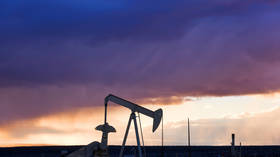Methane leaks at US petroleum operations far worse than previously estimated – study

Oil and gas wells and pipelines in the state of New Mexico are emitting significantly larger amounts of methane than previous data had indicated, researchers from Stanford University have revealed. Methane is known to be one of the main contributors to global warming, many times more potent than carbon dioxide.
A fresh analysis of aerial data collected over the Permian Basin indicates that oil and gas facilities there are giving off 194 metric tons of methane per hour– a figure six times as high as the latest estimate from the US Environmental Protection Agency. The alarming study, authored by Yuanlei Chen and Evan Sherwin, was published in the journal Environmental Science & Technology on Wednesday.
The two researchers described their disbelief when they first saw the startling results. Dr. Sherwin, a postdoctoral research fellow in energy resources engineering at Stanford, told The New York Times that he and his colleague had “spent really the past more than two years going backwards and forwards thinking of ways that we might be wrong and talking with other experts in the methane community.” He noted that, after initial doubts, the researchers “realized that this was our best estimate of methane emissions in this region and this time, and we had to publish it.”
The researchers took measurements from each site several times, as methane concentrations are subject to fluctuation over time, with wells occasionally releasing the gas on purpose in a process known as venting. However, the greenhouse gas can also leak on its own due to aging or faulty equipment.
According to the study, a relatively small number of wells are responsible for the “vast majority” of methane leaks, indicating that, by addressing issues at those problematic sites, the overall levels of methane emission could potentially be kept in check.
Traditionally, natural gas is considered to be a ‘cleaner’ source of energy compared to other hydrocarbons, with officials in the US and elsewhere promoting it as a viable transition option from ‘dirty’ coal to renewables. Yet, according to this latest study, natural gas may be not as benign as it seems, as its production is associated with high emissions of methane, with a more pronounced warming potential than carbon dioxide.
The scientists behind the study told journalists that their research highlighted the need for similar measurements at other oil and gas sites across the US to get a bigger picture. The latest research is arguably the most extensive in America to date, covering some 27,000 wells.












